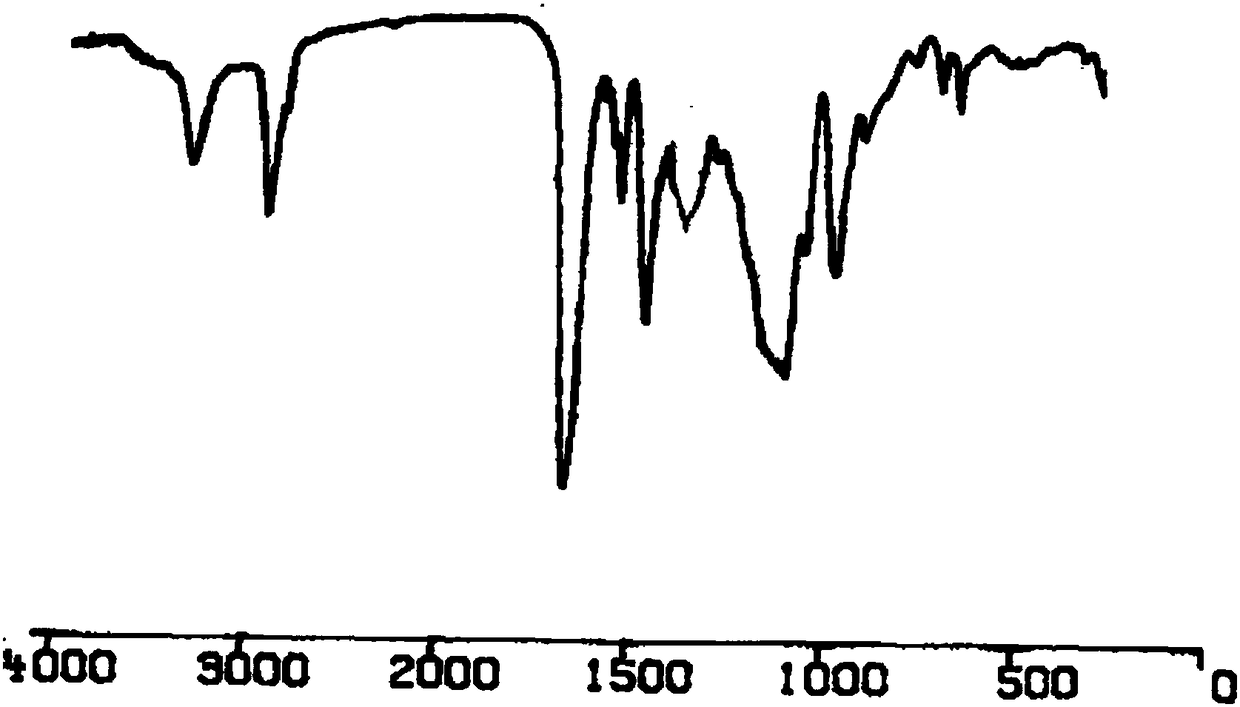Preparation method of polyether polyol-unsaturated polyester modified hydroxyl acrylic dispersion
A technology of polyether polyol and hydroxy acrylic acid, applied in the field of materials, can solve the problems of gloss, fullness defect, high solvent content, poor water resistance, etc., and achieves the effect of narrow particle size distribution range, simple preparation process and excellent water resistance
- Summary
- Abstract
- Description
- Claims
- Application Information
AI Technical Summary
Problems solved by technology
Method used
Image
Examples
Embodiment 1
[0020] (1) Mix 2g of propylene oxide, 3.0g of butanediol, 2g of propylene glycol methyl ether acetate, 0.02g of potassium hydroxide, and 2.0g of unsaturated polyester, heat up to 140-145°C, and stir for 0.5-1h to obtain a reaction mixture;
[0021] (2) Add dropwise di-tert-butyl peroxide 0.5g and methyl acrylate 5g, methyl methacrylate 6g, butyl acrylate 4g in the reaction mixture that step (1) obtains, after the dropwise addition is completed and incubated for 1h, Continue to add dropwise the remaining 0.5g of di-tert-butyl peroxide, 5g of methyl acrylate, 6g of methyl methacrylate, and 4g of butyl acrylate. , N dimethylethanolamine 4g to neutralize, add an appropriate amount of deionized water to stir and disperse for 1-2h, and then discharge to obtain the polyether polyol-unsaturated polyester modified hydroxyl acrylic dispersion (hereinafter referred to as product A).
Embodiment 2
[0023] (1) Mix 3g of epichlorohydrin, 5.0g of propylene glycol, 3g of propylene glycol methyl ether acetate, 0.03g of potassium hydroxide, and 3.0g of unsaturated polyester, heat up to 140-145°C, and stir for 0.5-1h to obtain a reaction mixture ;
[0024] (2) add dibenzoyl peroxide 1.0g and methyl acrylate 8g, methyl methacrylate 2g, hydroxyethyl methacrylate 5g, ethyl acrylate 5g in the reaction mixture that step (1) obtains, add After keeping warm for 1 hour, continue to add the remaining 1.0g of dibenzoyl peroxide, 8g of methyl acrylate, 2g of methyl methacrylate, 5g of hydroxyethyl methacrylate, and 5g of ethyl acrylate, and keep warm for 1-2 hours after adding Afterwards, lower the temperature to 75-80oC, add 6g of triethylamine to neutralize, add an appropriate amount of deionized water to stir and disperse for 1-2 hours, and discharge the material to obtain the polyether polyol-unsaturated polyester modified hydroxyacrylic acid Dispersion (hereinafter referred to as pr...
Embodiment 3
[0026] (1) Mix 2.37g of propylene oxide, 3.66g of butanediol, 3g of propylene glycol methyl ether acetate, 0.02g of potassium hydroxide, and 2.21g of unsaturated polyester, heat up to 140-145°C, and stir for 0.5-1h to obtain reaction mixture;
[0027] (2) in the reaction mixture that step (1) obtains, drop di-tert-butyl peroxide 0.56g and acrylate monomer (the mass ratio of methyl acrylate, methyl methacrylate, butyl acrylate is 1: 1:1) 18.0g, after the dropwise addition is completed and kept warm for 1h, continue to add dropwise the remaining di-tert-butyl peroxide 0.56g and acrylate monomers (methyl acrylate, methyl methacrylate, butyl acrylate) The mass ratio is 1:1:1) 18.0g, after the dropwise addition, keep warm for 1-2h, then cool down to 75-80 o C, add 5.4g of N,N dimethylethanolamine to neutralize, add an appropriate amount of deionized water to stir and disperse for 1-2h, and discharge the material to obtain the polyether polyol-unsaturated polyester modified hydroxy...
PUM
 Login to View More
Login to View More Abstract
Description
Claims
Application Information
 Login to View More
Login to View More - R&D
- Intellectual Property
- Life Sciences
- Materials
- Tech Scout
- Unparalleled Data Quality
- Higher Quality Content
- 60% Fewer Hallucinations
Browse by: Latest US Patents, China's latest patents, Technical Efficacy Thesaurus, Application Domain, Technology Topic, Popular Technical Reports.
© 2025 PatSnap. All rights reserved.Legal|Privacy policy|Modern Slavery Act Transparency Statement|Sitemap|About US| Contact US: help@patsnap.com



